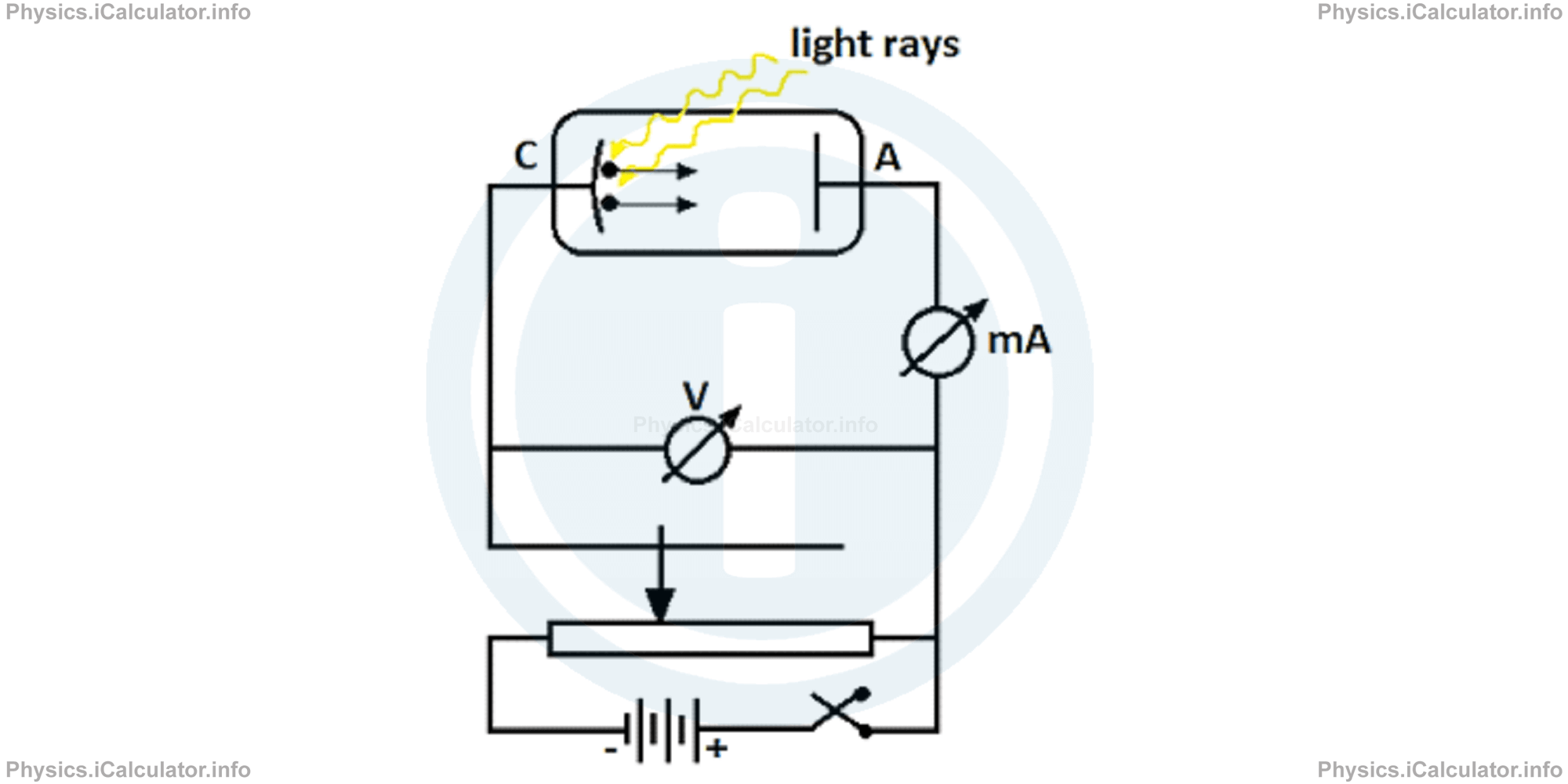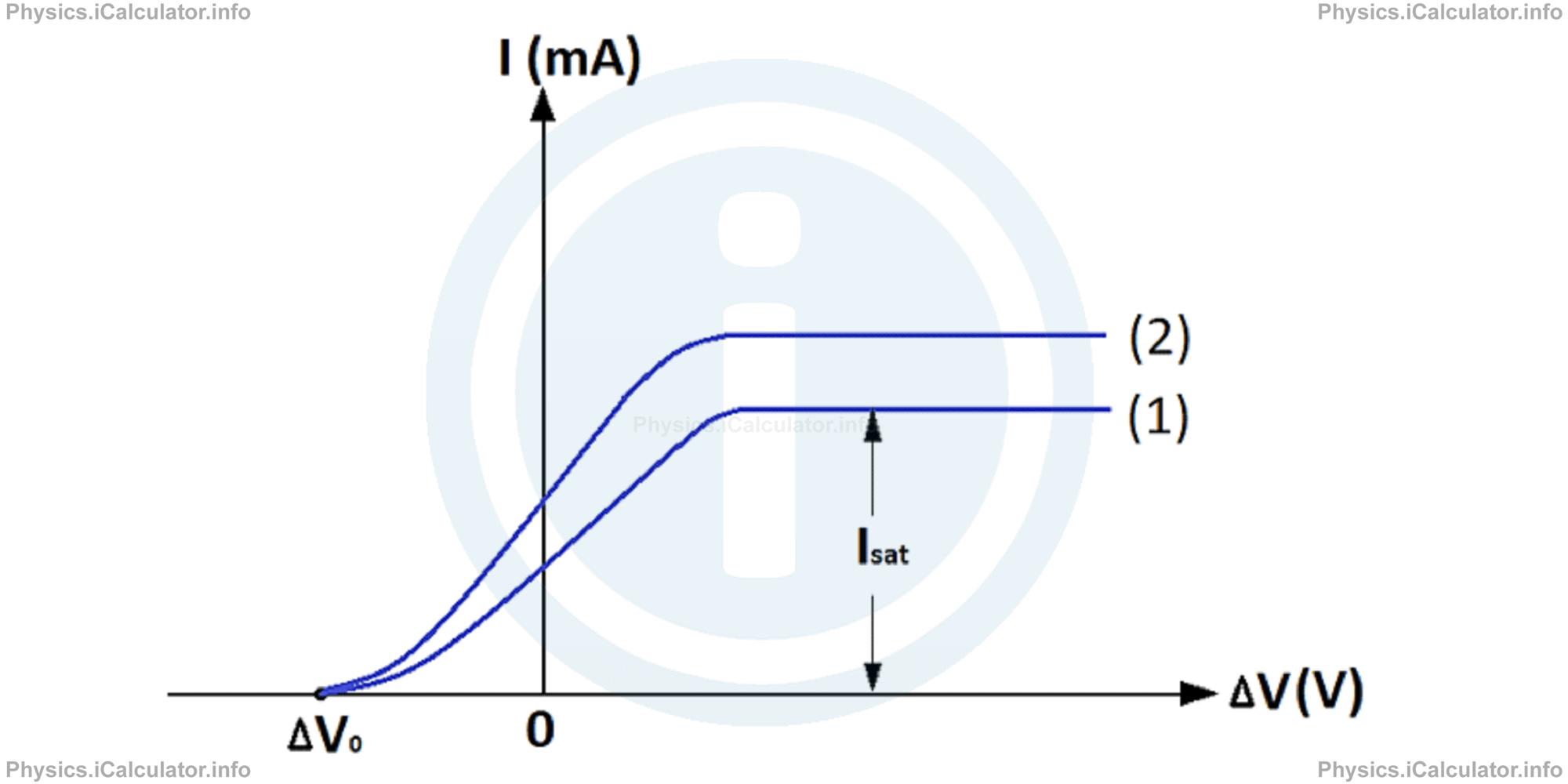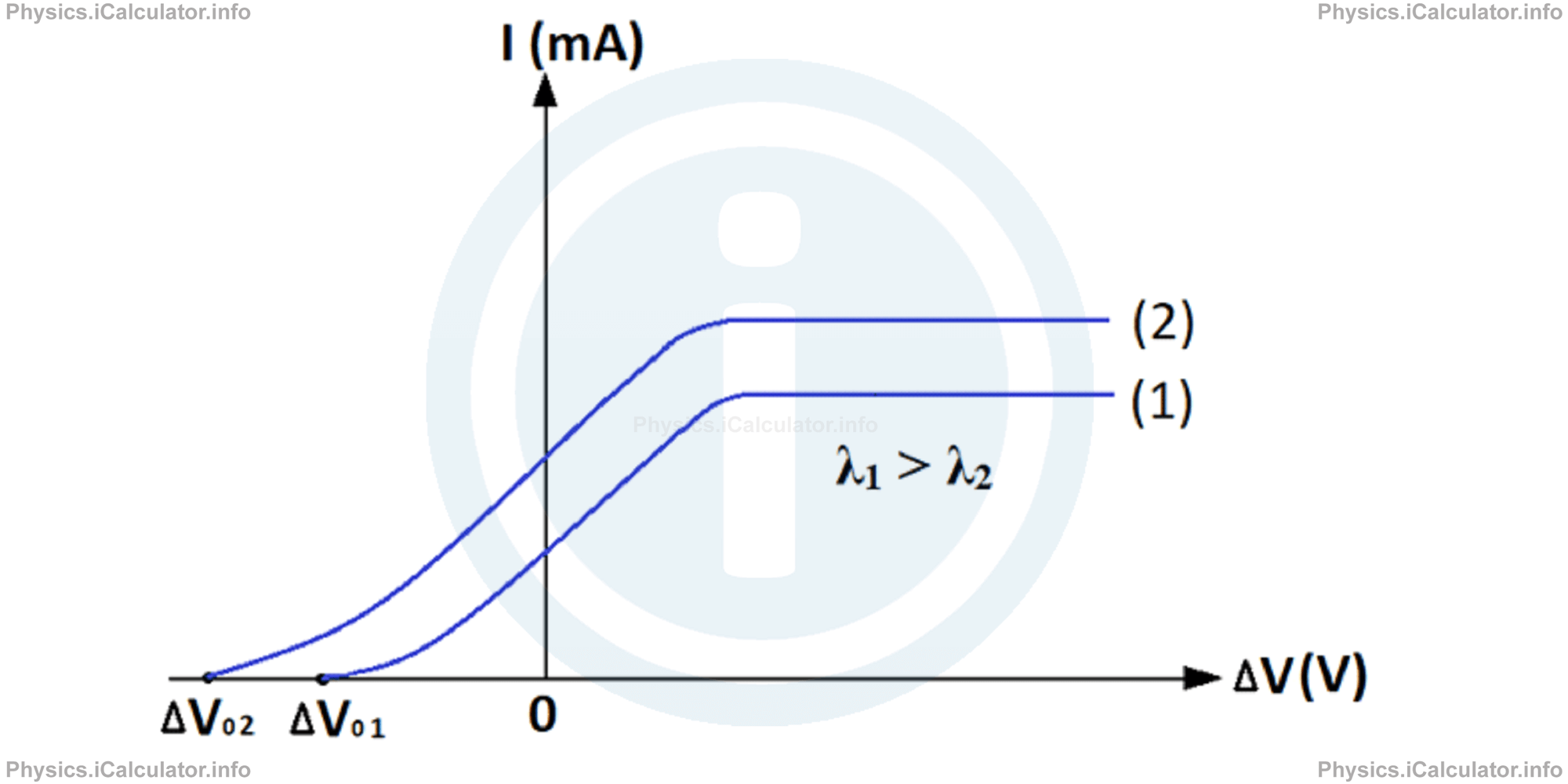Menu
Physics Lesson 19.2.1 - Laws of the Photoelectric Effect
Please provide a rating, it takes seconds and helps us to keep this resource free for all to use
Welcome to our Physics lesson on Laws of the Photoelectric Effect, this is the first lesson of our suite of physics lessons covering the topic of The Photoelectric Effect, you can find links to the other lessons within this tutorial and access additional physics learning resources below this lesson.
Laws of the Photoelectric Effect
By definition, the photoelectric effect is the phenomenon of electrons detachment from the surface of a metal when light falls on this metal surface. This phenomenon was first discovered by Hertz, in 1887.
We can study the laws of photoelectric effect using the electric circuit shown in the figure below.

A glass balloon containing high vacuum and two metal electrodes (cathode, C and anode, A) are connected to the source (cathode is connected to the negative pole of the source and anode to the positive one). This results in the application of a potential difference between the electrodes. The experiment shows that when a light beam of a suitable frequency falls on the negative electrode (i.e. on the cathode C), a number of electrons detach from cathode and move towards the positive electrode (anode, A) due to the potential difference produced by the source. The milliammeter, A is used to measure the current, I flowing in the circuit and the voltmeter, V measures the potential difference between the electrodes. The voltage applied at the electrodes can be changed through the variable resistor (rheostat) represented through the vertical arrow in the circuit.
The I vs ΔV graph below shows the dependence of current in the circuit from potential difference (voltage). It is obtained for two different situations, where in the second case is used a light with a higher flux (energy per second falling on the cathode surface) than in the first one. However, the wavelength is the same for both cases.

The increase of voltage (starting from zero) is accompanied with the increase of current up to a maximum value Isat, at which the saturation regime is set. This saturation current does not increase anymore with the increase in voltage as the number of electrons detached from cathode reach immediately the anode for higher voltages applied. The value of saturation current depends on the light flux and it is higher from greater fluxes.
From the graph you can see that there is some current flowing through the circuit even when the voltage in the circuit is zero, albeit very small. This phenomenon occurs because some electrons detached from cathode move directly towards anode, closing thus the circuit. To prevent this undesired current, a (negative) stopping voltage ΔV0 is applied in the circuit by changing the polarities of electrodes. Obviously, for higher negative values of stopping voltages, the current in the circuit remains zero. The graph indicates that this stopping voltage has the same value for both light beams, so it does not depend by the amount of light flux. Indeed, experiments show that stopping voltage depends only by the light wavelength (and frequency therefore). This fact is demonstrated in the figure below, in which the current vs voltage graph for two beams of different wavelengths (λ1 > λ2) is shown.

All these experiments and graphs derived from them, led to the following conclusions, known as the four laws of photoelectric effect:
- Photoelectric effect occurs only when the frequency f of the incident light is greater or at least equal to a frequency f0, which is a characteristic of the metal used. This characteristic frequency is known as the hreshold frequency of photoelectrict effect. Mathematically, we write
- The stopping voltage ΔV0 depends only by the frequency f of the incident light in a proportional fashion. Mathematically, we write: ∆V0∝f
- The number of photoelectrons detached from the metal plate in every second is proportional to the light flux falling on the cathode surface. Mathematically, we have:N(e)/t ∝ Φ/A
- The photoelectric effect is a phenomenon that practically does not have any inertia. It occurs simultaneously with the light incidence on the cathode surface.
Despite the experimental discovery of the four laws regarding photoelectric effect, their theoretical explanation was impossible within the framework of classical physics. This fact was another alert for the scientists of that time to review their understanding about the continuous nature of light.
You have reached the end of Physics lesson 19.2.1 Laws of the Photoelectric Effect. There are 3 lessons in this physics tutorial covering The Photoelectric Effect, you can access all the lessons from this tutorial below.
More The Photoelectric Effect Lessons and Learning Resources
Whats next?
Enjoy the "Laws of the Photoelectric Effect" physics lesson? People who liked the "The Photoelectric Effect lesson found the following resources useful:
- Laws Feedback. Helps other - Leave a rating for this laws (see below)
- Modern Physics Physics tutorial: The Photoelectric Effect. Read the The Photoelectric Effect physics tutorial and build your physics knowledge of Modern Physics
- Modern Physics Revision Notes: The Photoelectric Effect. Print the notes so you can revise the key points covered in the physics tutorial for The Photoelectric Effect
- Modern Physics Practice Questions: The Photoelectric Effect. Test and improve your knowledge of The Photoelectric Effect with example questins and answers
- Check your calculations for Modern Physics questions with our excellent Modern Physics calculators which contain full equations and calculations clearly displayed line by line. See the Modern Physics Calculators by iCalculator™ below.
- Continuing learning modern physics - read our next physics tutorial: The Compton Effect and Pressure of Light
Help others Learning Physics just like you
Please provide a rating, it takes seconds and helps us to keep this resource free for all to use
We hope you found this Physics lesson "The Photoelectric Effect" useful. If you did it would be great if you could spare the time to rate this physics lesson (simply click on the number of stars that match your assessment of this physics learning aide) and/or share on social media, this helps us identify popular tutorials and calculators and expand our free learning resources to support our users around the world have free access to expand their knowledge of physics and other disciplines.
Modern Physics Calculators by iCalculator™
- Characteristic Em Wavelength Calculator
- De Broglie Wave Calculator
- Rayleigh Jeans Relation Calculator
- Energy Of Photons Calculator
- Intensity Photoelectric Effect Calculator
- Kinetic Photoelectric Effect Calculator
- Light Pressure Calculator
- Radiation Black Body Calculator
- Stopping Voltage Photoelectric Effect Calculator
- Uncertainty Calculator
- Wave Width Calculator
- Scattered Radiation Compton Effect Calculator
- De Broglie Packet Calculator